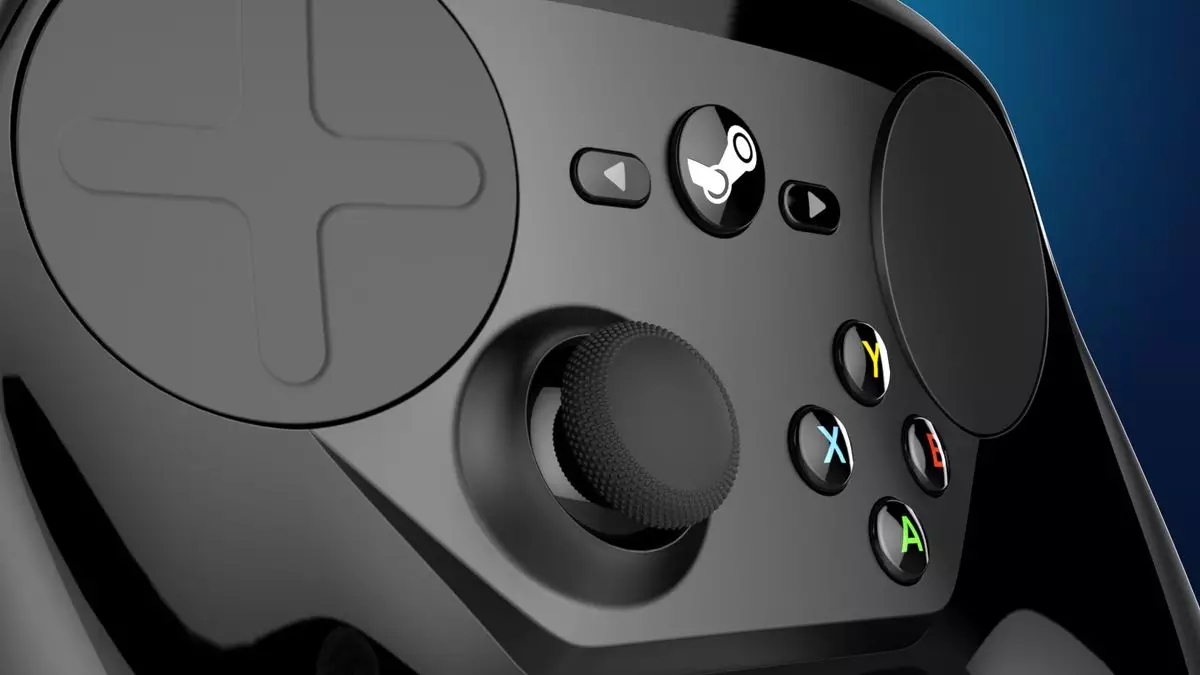In the ever-evolving landscape of gaming hardware, Valve’s previous attempts to innovate, particularly with the original Steam Controller, have garnered significant mixed reactions. Following its discontinuation in 2019, discussions about a successor—referred to as the Steam Controller 2, or “Ibex”—have emerged, creating a buzz among both enthusiasts and critics alike. This article delves into the potential implications of this new iteration, focusing on the controller’s anticipated features, challenges, and the existing gaming landscape.
Launched with high hopes, the original Steam Controller obtained a fervent fanbase alongside a notable amount of skepticism. Celebrated for its innovative design—featuring dual trackpads, gyro capabilities, and customizable buttons—this controller aimed to bridge the gap between traditional console gaming and PC titles requiring a mouse and keyboard. However, its ambitious approach also led to significant usability issues. Gamers often had to navigate a labyrinth of community-made configurations to find functional setups, as Valve provided no official standard profiles.
Moreover, the physical build quality of the Steam Controller faced criticism that remained a sticking point for potential users. Many gamers opted for conventional controllers or mouse-keyboard setups that yielded a more immediate, satisfying gaming experience. The rise of handheld gaming devices and the resurgence of remote play options have since underscored the necessity for robust gaming peripherals designed with the modern household in mind.
The recent chatter around the Steam Controller 2 has sparked renewed optimism among fans and speculation within the industry. Reports from reliable sources, including the noted leaker Brad Lynch, suggest that Valve is inching toward mass production of the Ibex. Nevertheless, specific details about its features, production methods, and overall design—factors that heavily influenced the original’s reception—remain elusive.
There’s intrigue surrounding whether Valve will rely on in-house production or partner with third-party manufacturers. Following the industry’s trends, utilizing third-party companies could enhance efficiency and foster a more refined product. In a world where user experience is paramount, Valve needs to ensure the Steam Controller 2 doesn’t merely replicate its predecessor’s shortcomings but rather leverages the lessons learned from both it and the widely successful Steam Deck.
One of the critical questions surrounding the Steam Controller 2 is the current gaming landscape’s adaptability to new peripherals. With couch gaming experiencing a revival, especially amongst Steam users who benefit from technologies like remote play and screen mirroring, the timing may be propitious for introducing a fresh controller. Players are likely looking for seamless integration of their gaming hardware across different platforms, enhancing their overall gaming experiences.
Valve’s previous foray into couch gaming with Steam Machines failed to gain traction, primarily due to their delayed launch and the need for a software experience tailored to this niche. However, the gaming ecosystem has since expanded, influenced by successful products such as the Steam Deck and other handheld devices, providing fertile ground for a new controller designed with versatile usages in mind.
As speculation rises about what the Steam Controller 2 will feature, there is considerable debate over whether it should retain the trackpad functionality of its predecessor. While this design aimed to cater to PC titles, gamers would likely welcome an approach favoring more traditional inputs alongside modern innovations, such as thumbsticks. A hybrid design could resonate better with a broader audience, integrating lessons learned from previous hardware while keeping pace with prevalent user preferences in today’s gaming market.
The ideal scenario would involve a controller that embodies both familiar and groundbreaking features, striking the right balance between tradition and innovation. Enhancements such as improved ergonomics and durability would elevate the controller’s build quality, addressing one of the main criticisms leveled at the original Steam Controller.
In examining the potential for a new generation of Steam Controllers, it is crucial to consider Valve’s historical significance in the gaming industry. The excitement surrounding the Steam Controller 2 reflects that the company still possesses the courage to innovate, even after initial setbacks. If designed thoughtfully, blending user-centric features and contemporary design elements, the Steam Controller 2 could very well carve out its niche in the future landscape of gaming peripherals.
The anticipation of its arrival is a testament not just to Valve’s legacy but also to the evolving expectations of gamers seeking inclusive and versatile hardware tailored for diverse gaming experiences. With remote play facilitating greater camaraderie and flexible setups, the forthcoming Steam Controller 2 may redefine what players can expect from their gaming hardware. As industry insiders and fans alike await further details, one thing is certain: the gaming community will be watching closely.

